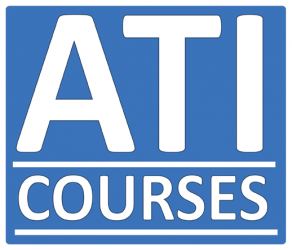ATI's Vibration & Noise Control course ŚNew Insights and Developments
This course is intended for engineers and scientists concerned with the vibration reduction and quieting of vehicles, devices, and equipment. The course will provide guidance relevant to design, problem solving, and development of improvements. It will emphasize understanding of the relevant phenomena and concepts in order to enable the participants to address a wide range of practical problems insightfully. The instructors will draw on their extensive experience to illustrate the subject matter with examples related to the participant’s specific areas of interest. Although the course will begin with a review and will include some demonstrations, participants ideally should have some prior acquaintance with vibration or noise fields. Each participant will receive a complete set of course notes and the text Noise and Vibration Control Engineering, a $210 value. View course sampler
What you will learn:
- How to attack vibration and noise problems
- What means are available for vibration and noise control
- How to make vibration isolation, damping, and absorbers work
- How noise generated and radiated, and how it can be reduced
Course Outline:
- Review of Vibration Fundamentals from a Practical Perspective. The roles of energy and force balances. When to add mass, stiffeners, and damping. General strategy for attacking practical problems. Comprehensive checklist of vibration control means.
- Structural Damping Demystified. Where damping can and cannot help. How damping is measured. Overview of important damping mechanisms. Application principles. Dynamic behavior of plastic and elastomeric materials. Design of treatments employing viscoelastic materials.
- Expanded Understanding of Vibration Isolation. Where transmissibility is and is not useful. Some common misconceptions regarding inertia bases, damping, and machine speed. Accounting for support and machine frame flexibility, isolator mass and wave effects, source reaction. Benefits and pitfalls of two-stage isolation. The role of active isolation systems.
- The Power of Vibration Absorbers. How tuned dampers work. Effects of tuning, mass, damping. Optimization. How waveguide energy absorbers work.
- Structure-borne Sound and High Frequency Vibration. Where modal and finite-element analyses cannot work. Simple response estimation. What is Statistical Energy Analysis and how does it work? How waves propagate along structures and radiate sound.
- No-Nonsense Basics of Noise and its Control. Review of levels, decibels, sound pressure, power, intensity, directivity. Frequency bands, filters, and measures of noisiness. Radiation efficiency. Overview of common noise sources. Noise control strategies and means.
- Intelligent Measurement and Analysis. Diagnostic strategy. Selecting the right transducers; how and where to place them. The power of spectrum analyzers. Identifying and characterizing sources and paths.
- Coping with Noise in Rooms. Where sound absorption can and cannot help. Practical sound absorbers and absorptive materials. Effects of full and partial enclosures. Sound transmission to adjacent areas. Designing enclosures, wrappings, and barriers.
- Ducts and Mufflers. Sound propagation in ducts. Duct linings. Reactive mufflers and side-branch resonators. Introduction to current developments in active attenuation.
Speaker and Presenter Information
Dr. Eric Ungar has specialized in research and consulting in vibration and noise for more than 40 years, published over 200 technical papers, and translated and revised Structure-Borne Sound. He has led short courses at the Pennsylvania State University for over 25 years and has presented numerous seminars worldwide. Dr. Ungar has served as President of the Acoustical Society of America, as President of the Institute of Noise Control Engineering, and as Chairman of the Design Engineering Division of the American Society of Mechanical Engineers. ASME honored him with it's Trent-Crede Medal in Shock and Vibration. ASA awarded him the Per Bruel Gold Medal for Noise Control and Acoustics for his work on vibrations of complex structures, structural damping, and isolation. Dr. James Moore has, for the past twenty years, concentrated on the transmission of noise and vibration in complex structures, on improvements of noise and vibration control methods, and on the enhancement of sound quality. He has developed Statistical Energy Analysis models for the investigation of vibrations and noise complex structures as submarines, helicopters, and automobiles and has been instrumental in the acquisition of corresponding data bases. He has participated in the development of active noise control systems, noise reduction coating and signal conditioning means, as well as in the presentation of numerous short courses and industrial training programs.Relevant Government Agencies
Air Force, Army, Navy & Marine Corps, Intelligence Agencies, DOD & Military, Office of the President (includes OMB), Dept of Health & Human Services, Dept of Homeland Security, Dept of Housing & Urban Development, Dept of the Interior, Dept of Transportation, SSA, NASA, Legislative Agencies (GAO, GPO, LOC, etc.), Judicial Branch Agencies, State Government, Municipal Government, CIA, FEMA, Office of Personnel Management, Coast Guard, National Institutes of Health, Census Bureau, USAID
This event has no exhibitor/sponsor opportunities
When
Mon-Thu, May 2-5, 2011, 8:30am - 4:30pm
Where
Boston, MA
Website
Click here to visit event website
Organizer
ATI Courses





